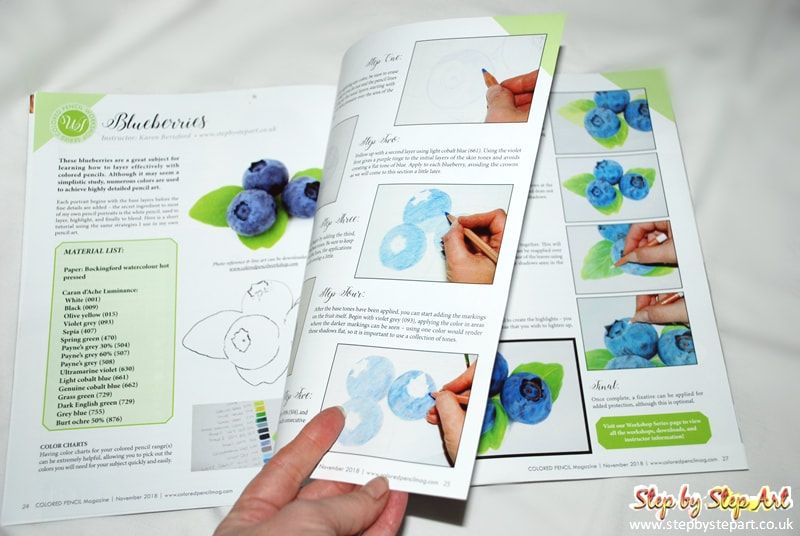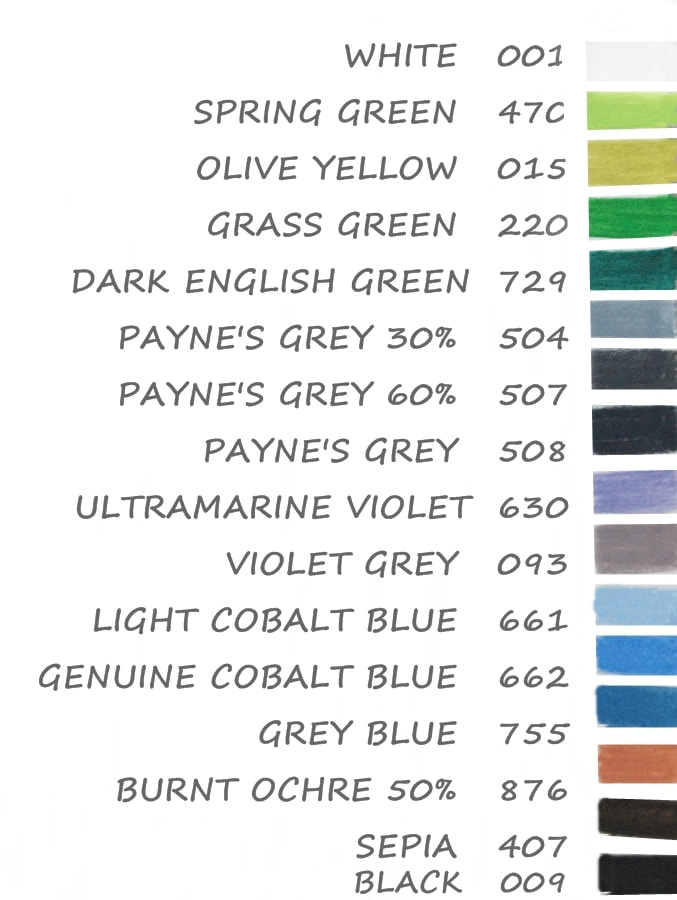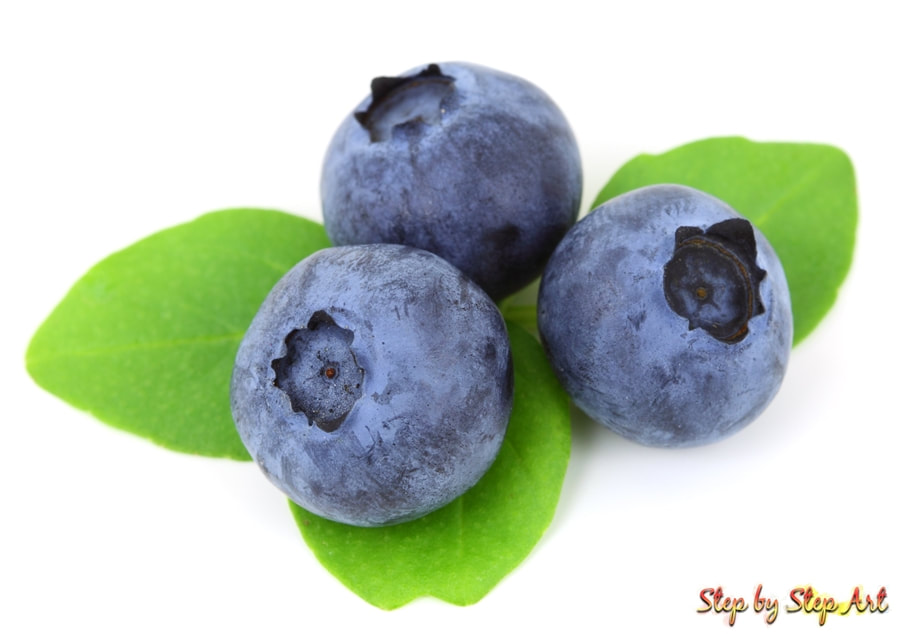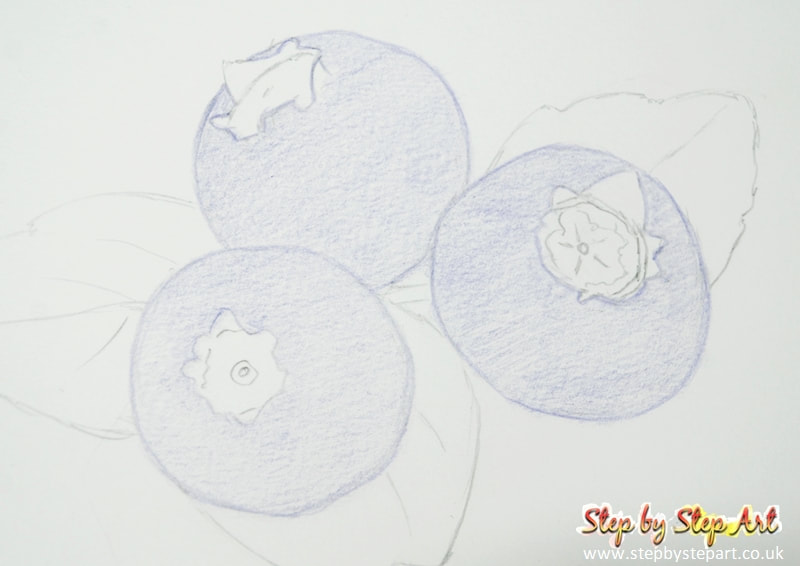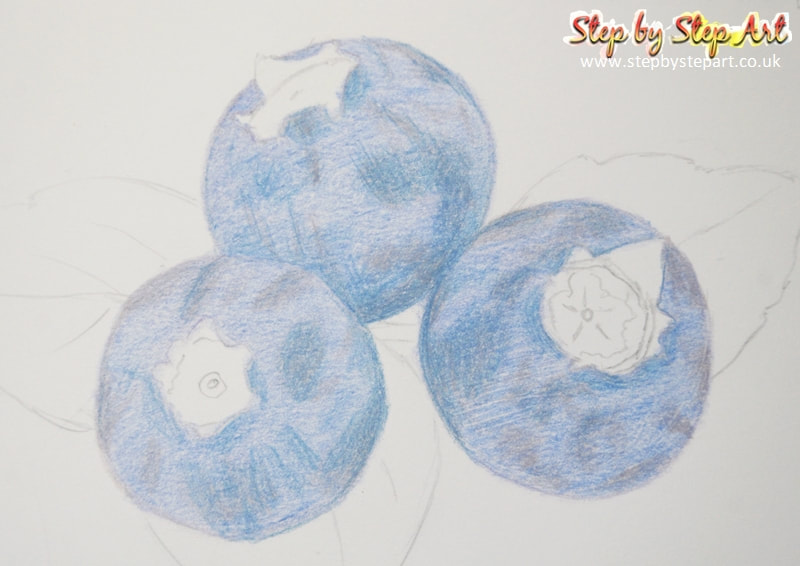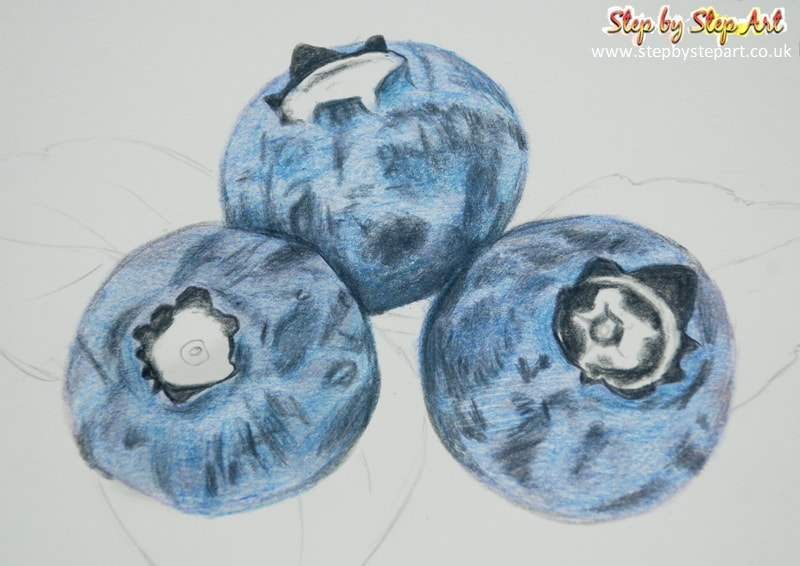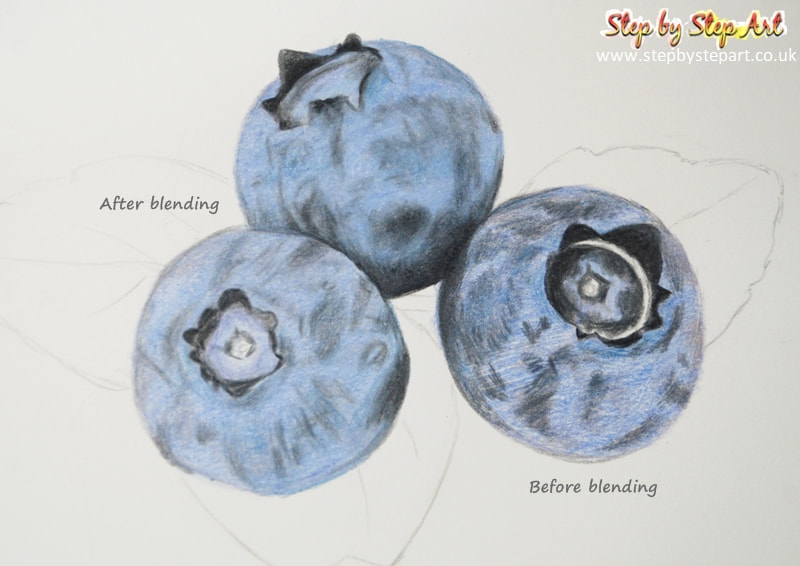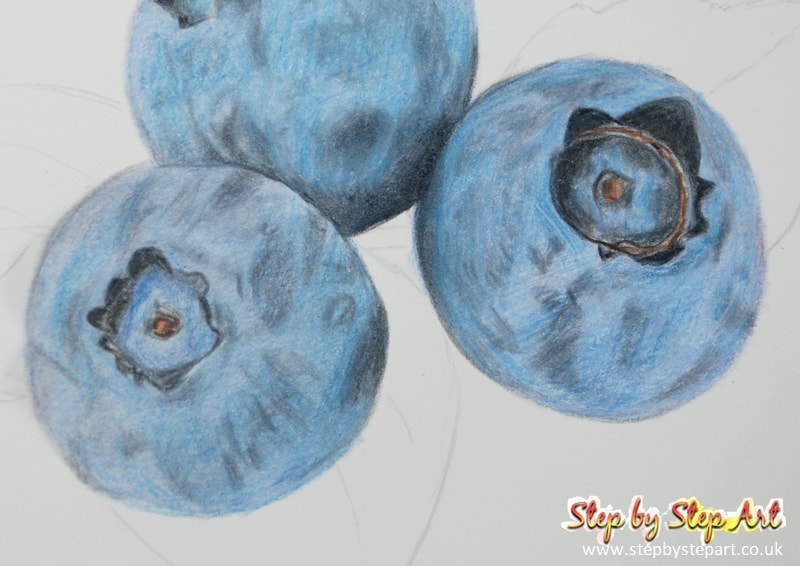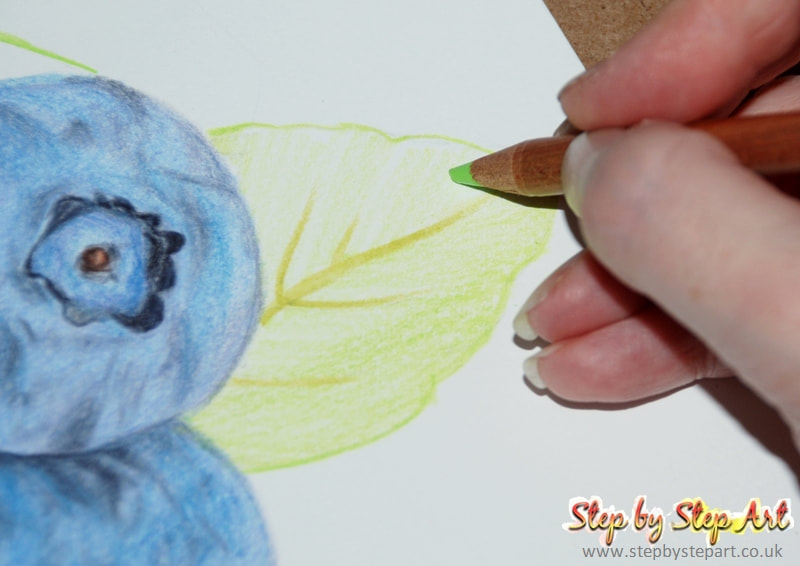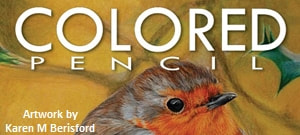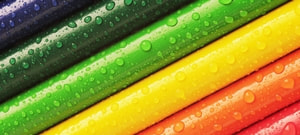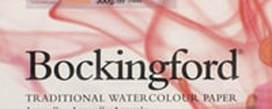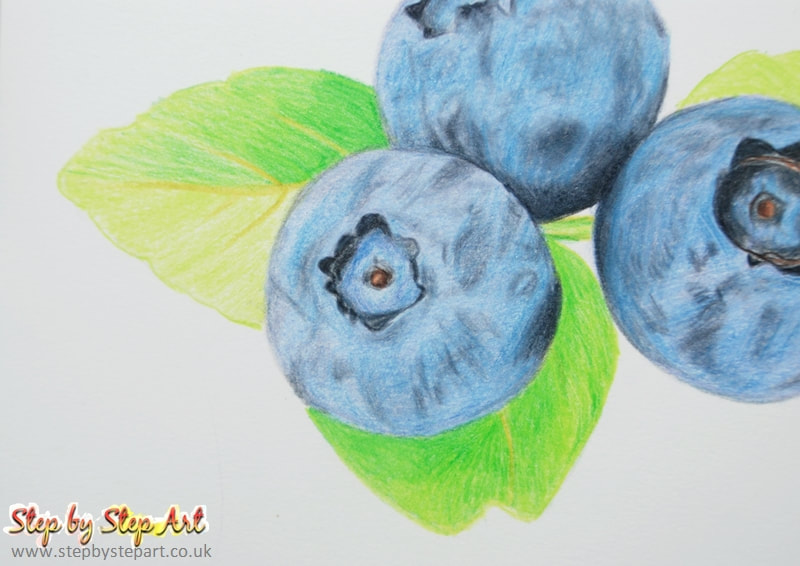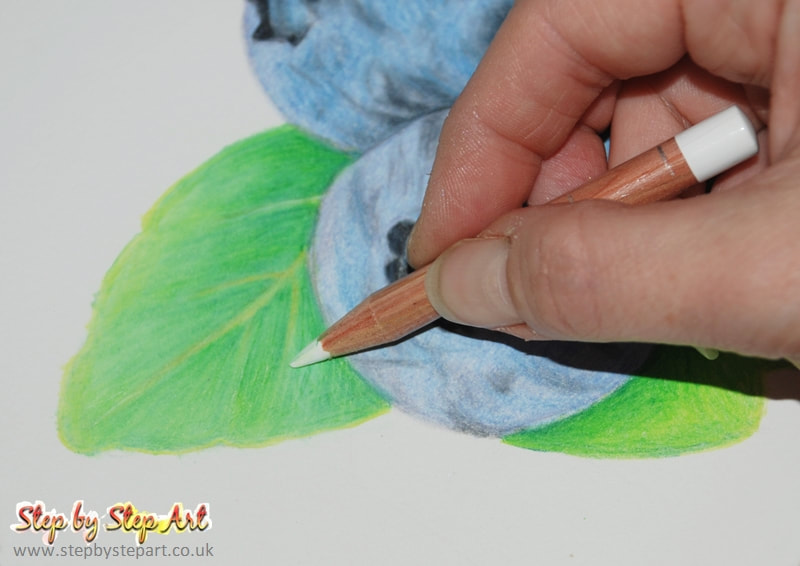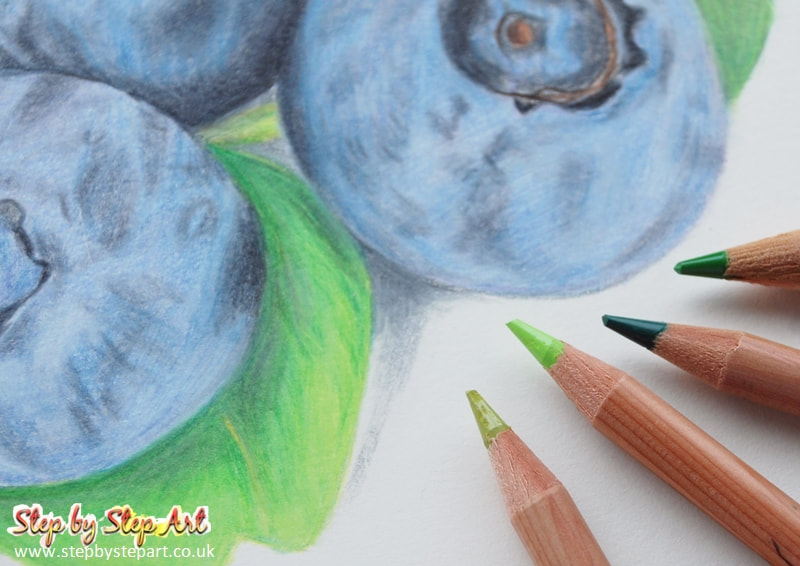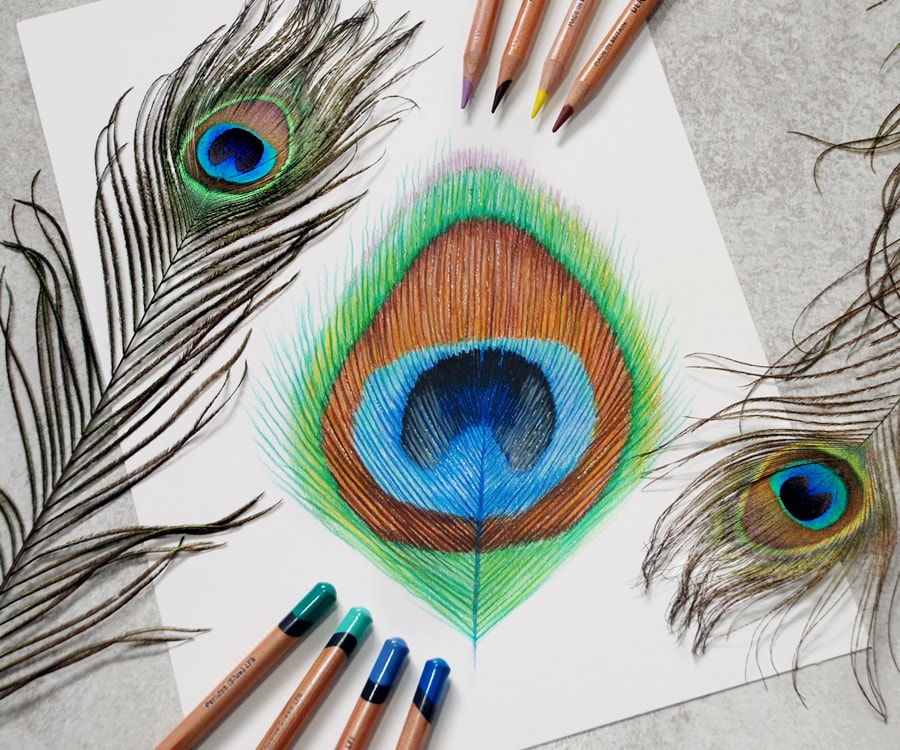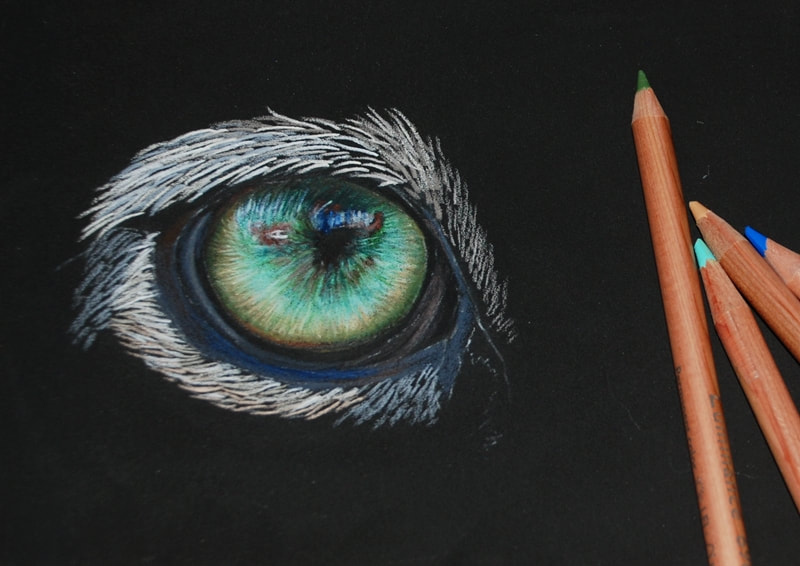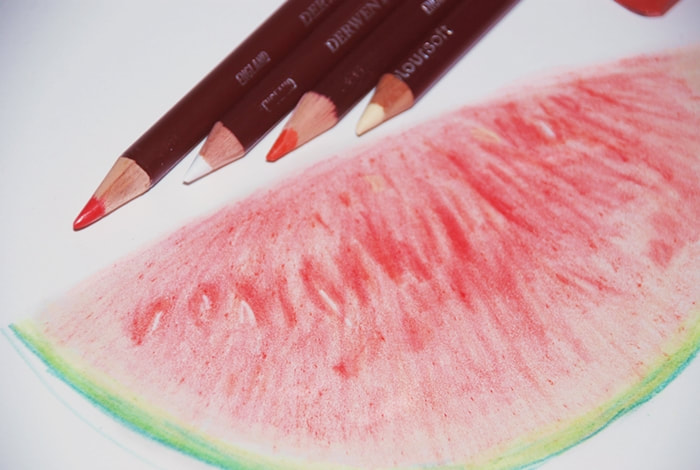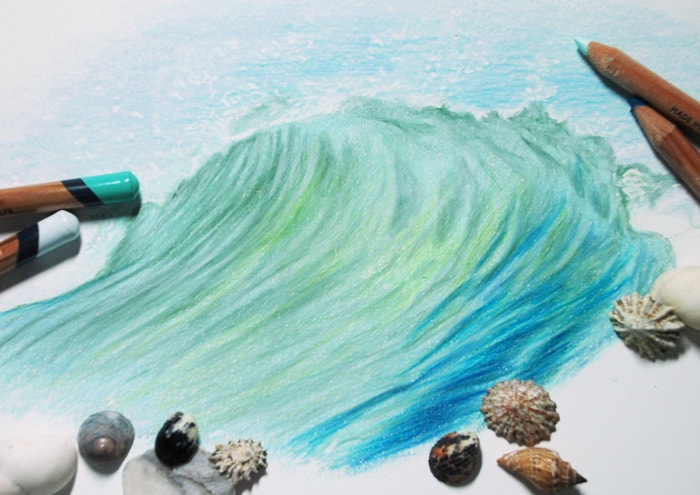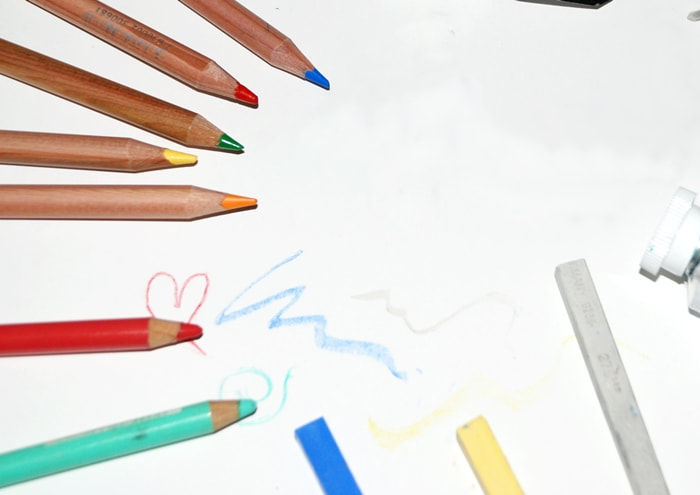Blueberries in Coloured pencils Tutorial
Coloured pencils used: Caran Dache Luminance range
Paper used: Bockingford hot pressed 300gsm
Paper used: Bockingford hot pressed 300gsm
This tutorial was originally created for the Colored pencil Magazine 'Workshop series' back in November 2018 and has been reproduced here for inclusion in my mini tutorials sections. This tutorial gives an extensive breakdown of the process required to create this vibrant subject. It explains in short stages how to apply, and why building up colour tones in this way aids the realism. It also explains how and when to blend for best effect.
The reference image can be found below, which you can screen grab and print out or view on a tablet whilst reading the instructions on a smartphone or computer. The colour chart shown here is the colours from the Caran d'Ache Luminance range, or you can pick similar colours from your own preferred pencil collection if you do not have the Luminance pencils.
I hope you enjoy this tutorial and if you would like to request a subject for inclusion of a future mini tutorial, please get in touch!
The reference image can be found below, which you can screen grab and print out or view on a tablet whilst reading the instructions on a smartphone or computer. The colour chart shown here is the colours from the Caran d'Ache Luminance range, or you can pick similar colours from your own preferred pencil collection if you do not have the Luminance pencils.
I hope you enjoy this tutorial and if you would like to request a subject for inclusion of a future mini tutorial, please get in touch!
The reference image
Beginning the base layers
|
After creating the outline, before applying any colour be sure to erase the outline as you go along to avoid sealing the outline beneath the layers. Begin by building up the tonal layers starting with the ULTRAMARINE VIOLET (630) - apply loose pressure over the area of the fruit using the length of the pencil.
|
Follow up with a second layer using LIGHT COBALT BLUE (661). Having applied a violet tone first gives the fruit a purple undertone, allowing you to layer the blue tones on top. Apply this colour to each blueberry before moving on to the COBALT BLUE (662) tone for the third layer. Keep the application within the lines but should you overlap and providing your layers are light enough, you should still be able to erase.
|
Do not cover the crowns at this stage
|
Once the base layers have all been applied you can start adding the markings on the fruit. Begin with VIOLET GREY (093), applying the colour in areas where darker shading is seen. Using one colour would render these shadows rather flat so it is important to build up using more than one tone
|
Apply a secondary layer to the shading using PAYNE'S GREY 30% (504) be sure to apply a little more pressure on each consecutive layer for deeper shading. The third layer is using GREY BLUE (755). Avoid saturating the area with each colour as these stages are all about achieving a mixture of tones for a realistic finish at the end.
|
Shading & Blending
|
The final layer for the shading is PAYNE's GREY 60% (507) finalise the markings, placing any individual lines too. Begin by filling in the inner section of the crowns of the fruit; apply softly in the lighter areas and heavier next to the outlines to create a smooth transition between the two.
|
Return to the LIGHT COBALT BLUE (661) and apply the colour inside the crowns, avoiding the brown areas which will be filled in last. Redefine the darker areas of the crowns using the BLACK (009) ensuring there are no harsh lines between the black and the earlier application of Payne's Grey 60%.
|
|
This time use the LIGHT COBALT BLUE (661) as a blender, applying circular motions over the skins of the fruit to soften the pencil marks whilst creating a smooth layer of tones, avoid softening the marks too much. Fill in the brown sections of the crowns with BURNT OCHRE (876) and finish with SEPIA (407) in the darkest section namely the circular area of the berry on the right.
|
Begin the base application of the leaves by applying the veins first using OLIVE GREEN (015). Apply a heavy pressure into the paper which will create an indent and avoid consecutive colours covering this section. Apply a base tone of SPRING GREEN (470) over the leaf in upward strokes starting from the central vein out and upwards towards the edges. Create the less noticeable stem right in the centre of the fruit too with this colour.
|

